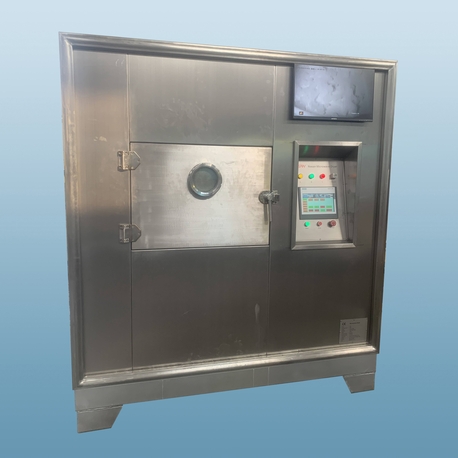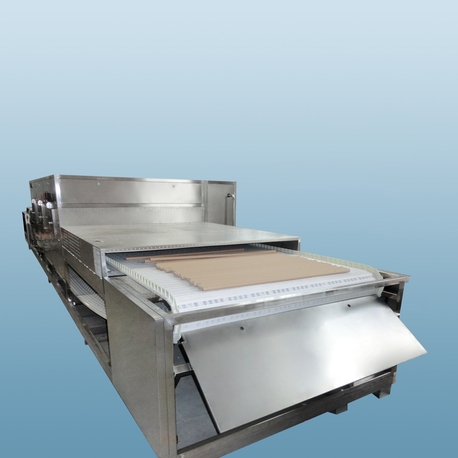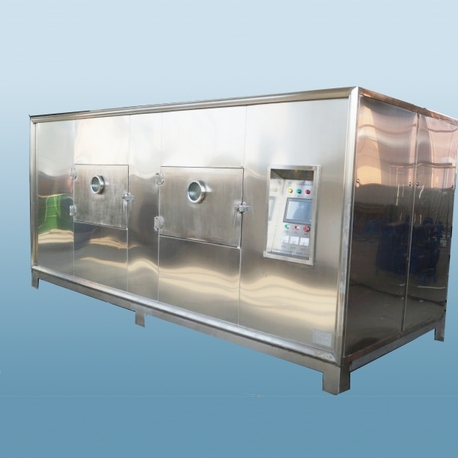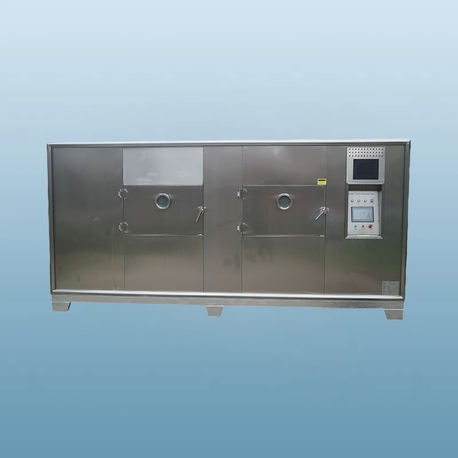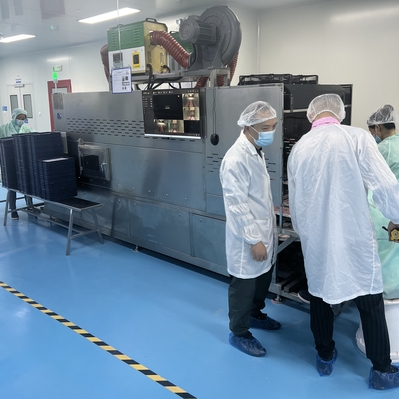The food processing industry continuously seeks innovative methods to preserve food, enhance quality, and extend shelf life. Among the various technologies employed, the Vacuum Drying Machine stands out as a superior solution for dehydrating a wide array of food products. This advanced piece of equipment operates on the principle of reducing the pressure within a sealed chamber, thereby lowering the boiling point of water. This allows moisture to be removed from food at significantly lower temperatures compared to conventional hot-air drying methods. The result is a high-quality dried product that retains its nutritional value, vibrant color, potent aroma, and original shape far more effectively. This article delves deep into the role of the vacuum dryer in the food processing industry, exploring its workings, benefits, applications, types, and the common challenges operators face. Understanding these facets is crucial for any processor aiming to leverage this technology for superior product quality and operational efficiency.
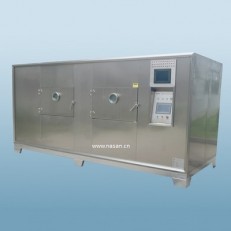
How a Vacuum Drying Machine Works: The Science Behind the Process
The core principle behind a Vacuum Drying Machine is straightforward yet profoundly effective. It combines the application of heat with a significantly reduced atmospheric pressure.
Reduced Pressure Environment: The process begins by placing the food product inside a sealed chamber. A vacuum pump then evacuates the air from this chamber, dramatically lowering the internal pressure. This reduction in pressure is the key differentiator.
Lower Boiling Point: At standard atmospheric pressure, water boils at 100°C (212°F). However, under a vacuum, the boiling point of water can be reduced to as low as 30-40°C (86-104°F) or even lower, depending on the strength of the vacuum.
Gentle Evaporation: With the boiling point lowered, the applied heat (which is relatively mild, often between 40°C and 80°C) is sufficient to cause moisture within the food to evaporate rapidly. This heat can be supplied through heated shelves (contact heating), infrared lamps, or microwaves in more advanced hybrid systems.
Moisture Removal: The evaporated moisture is then expelled from the chamber by the vacuum pump, often passing through a condenser first. The condenser cools the vapor, turning it back into liquid water, which is collected separately. This prevents water vapor from damaging the vacuum pump.
This gentle, low-temperature dehydration process is what makes vacuum drying so valuable for heat-sensitive foods, preventing the thermal degradation that can occur in traditional hot air drying.
Key Advantages of Using Vacuum Dryers for Food Processing
The adoption of vacuum drying technology offers a multitude of benefits that directly impact product quality and production efficiency.
Preservation of Nutrients and Bioactive Compounds: The low-temperature operation minimizes the destruction of heat-sensitive vitamins (like Vitamin C), antioxidants, and other phytonutrients. This makes vacuum-dried food nutritionally superior to many other dried variants.
Superior Color and Shape Retention: By avoiding high temperatures and the presence of oxygen, the vacuum drying process prevents enzymatic browning (e.g., in apples and bananas) and oxidation. Products maintain their original color and do not shrink or become shriveled as drastically, resulting in a more appealing visual presentation.
Enhanced Aroma and Flavor: The volatile compounds responsible for a food's signature aroma and flavor are preserved rather than being driven off by high heat. This leads to an end product that, when rehydrated, tastes and smells much closer to its fresh counterpart.
Increased Porosity and Improved Rehydration: The rapid evaporation of water under vacuum creates a highly porous structure within the food. This porous matrix allows water to penetrate much more quickly and effectively during rehydration, a critical factor for end-users.
Efficiency in Drying Hygroscopic Materials: Some sticky, sugar-rich foods (like honey or fruit pulps) are difficult to dry in open air. Vacuum drying efficiently handles these hygroscopic materials without causing a hard, caramelized surface layer.
Prevention of Oxidation and Microbial Growth: The absence of oxygen during the process inhibits oxidation (which causes rancidity in fats) and prevents the growth of aerobic microorganisms, contributing to a longer and more stable shelf life.
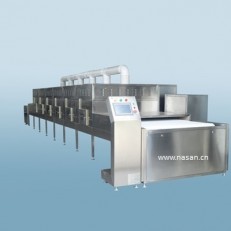
Common Applications of Vacuum Drying in the Food Sector
The Vacuum Drying Machine is incredibly versatile and finds applications across numerous food categories:
Fruits and Vegetables: This is one of the most common applications. Vacuum-dried berries, mangoes, bananas, carrots, and tomatoes are popular for snacks, cereals, and ingredient mixes due to their intense flavor and color.
Herbs and Spices: Delicate herbs like basil, parsley, and chives retain their green color and potent flavor much better under vacuum than with air drying. This is critical for high-value seasoning products.
Meat and Seafood Jerky: Vacuum drying produces jerky with a unique texture and superior flavor retention. It is also considered a safer method as the low-temperature environment minimizes the risk of forming harmful compounds sometimes associated with high-temperature drying or smoking.
Dairy Products: It is used for drying sensitive dairy ingredients like whey protein, colostrum, and certain cheeses, where maintaining functional properties is essential.
Instant Foods and Powders: Vacuum drying is excellent for creating instant soups, drink mixes, and fruit powders. The high porosity ensures rapid dissolution in water.
Specialty and Functional Foods: For high-value products infused with probiotics, enzymes, or other delicate bioactive compounds, vacuum drying is often the only method that can preserve their viability and efficacy.
Different Types of Vacuum Drying Machines
Not all Vacuum Drying Machines are the same. The industry utilizes several types, each suited for specific applications:
Vacuum Shelf Dryers (Batch Dryers): The most traditional type. Food is spread on trays that sit on heated shelves within the vacuum chamber. They are simple, versatile, and ideal for small-batch or R&D production.
Vacuum Belt Dryers (Continuous Dryers): These systems feature a conveyor belt that moves the product through a series of heated zones under a continuous vacuum. This is suited for high-volume, continuous production of pastes, purees, and granules.
Vacuum Freeze Dryers (Lyophilizers): While a distinct process, it is a subset of vacuum drying. The product is first frozen, and then a deep vacuum is applied, allowing the frozen water to sublimate directly from solid to vapor. This yields the highest quality product but at a significantly higher operational cost.
Microwave Vacuum Dryers: This hybrid technology combines microwave energy with a vacuum environment. Microwaves provide rapid and uniform volumetric heating, drastically reducing drying times compared to conventional conduction-based vacuum drying. It is excellent for challenging-to-dry materials.
Common Problems and Troubleshooting for Vacuum Drying Machines
Despite their advantages, operating a Vacuum Drying Machine comes with its own set of challenges. Here are some common problems and their potential solutions:
1. Inconsistent Drying or Wet Spots
Problem: Some parts of the product load are dry while others remain moist.
Causes: Uneven product sizing or thickness, uneven heat distribution from the shelves, overloading the trays, or improper tray spacing.
Solutions: Ensure uniform product size and layer thickness on trays. Regularly calibrate and maintain heating systems. Avoid overloading trays and ensure adequate air space for vapor flow.
2. Long Drying Times and High Energy Consumption
Problem: The process takes longer than expected, increasing operational costs.
Causes: Inefficient vacuum pump, condenser issues, too low a heating temperature, or chamber leaks.
Solutions: Check the vacuum pump oil and seals regularly. Ensure the condenser is operating at the correct temperature to efficiently trap moisture. Optimize the heating temperature within safe limits for the product. Conduct regular leak tests on the chamber door seal and fittings.
3. Loss of Vacuum During the Cycle
Problem: The system cannot maintain the required vacuum level.
Causes: The most common cause is a leak in the system. This could be from a damaged door gasket, loose fittings, valves, or sight glasses.
Solutions: Perform a thorough leak check using a helium leak detector or by pressurizing the chamber and checking for a pressure drop. Replace worn-out door gaskets and tighten any loose connections.
4. Product Melting or Collapsing
Problem: Heat-sensitive products like those high in sugar can melt or lose their structure.
Causes: The set temperature is too high for the product's composition, even under vacuum.
Solutions: Reduce the heating temperature. For very sensitive products, a pre-freezing step or using a vacuum freeze dryer might be necessary.
5. Contamination and Cleanability Issues
Problem: Product residue builds up, leading to cross-contamination and hygiene risks.
Causes: Complex machine design with hard-to-reach areas, use of non-sanitary materials.
Solutions: Implement a strict and frequent cleaning schedule. Choose machines designed with hygienic principles in mind (e.g., stainless steel construction, rounded corners, easy disassembly).
The Vacuum Drying Machine has firmly established itself as a cornerstone technology in the modern food processing industry. Its unparalleled ability to preserve the intrinsic qualities of food—nutrition, color, flavor, and aroma—makes it indispensable for producing high-value, premium dried products. As consumer demand for clean-label, nutritious, and convenient food continues to grow, the role of vacuum drying technology will only expand.
Future advancements are likely to focus on improving energy efficiency through better heat recovery systems, integrating smart sensors and AI for precise process control, and further developing hybrid technologies like microwave and infrared-assisted vacuum drying to slash processing times. While the initial investment and operational complexity are higher than for conventional dryers, the return in terms of product quality, marketability, and premium pricing makes the Vacuum Drying Machine a wise and profitable investment for forward-thinking food processors. By understanding its operation, benefits, and potential pitfalls, manufacturers can fully harness this powerful technology to create exceptional dried food products for the global market.


